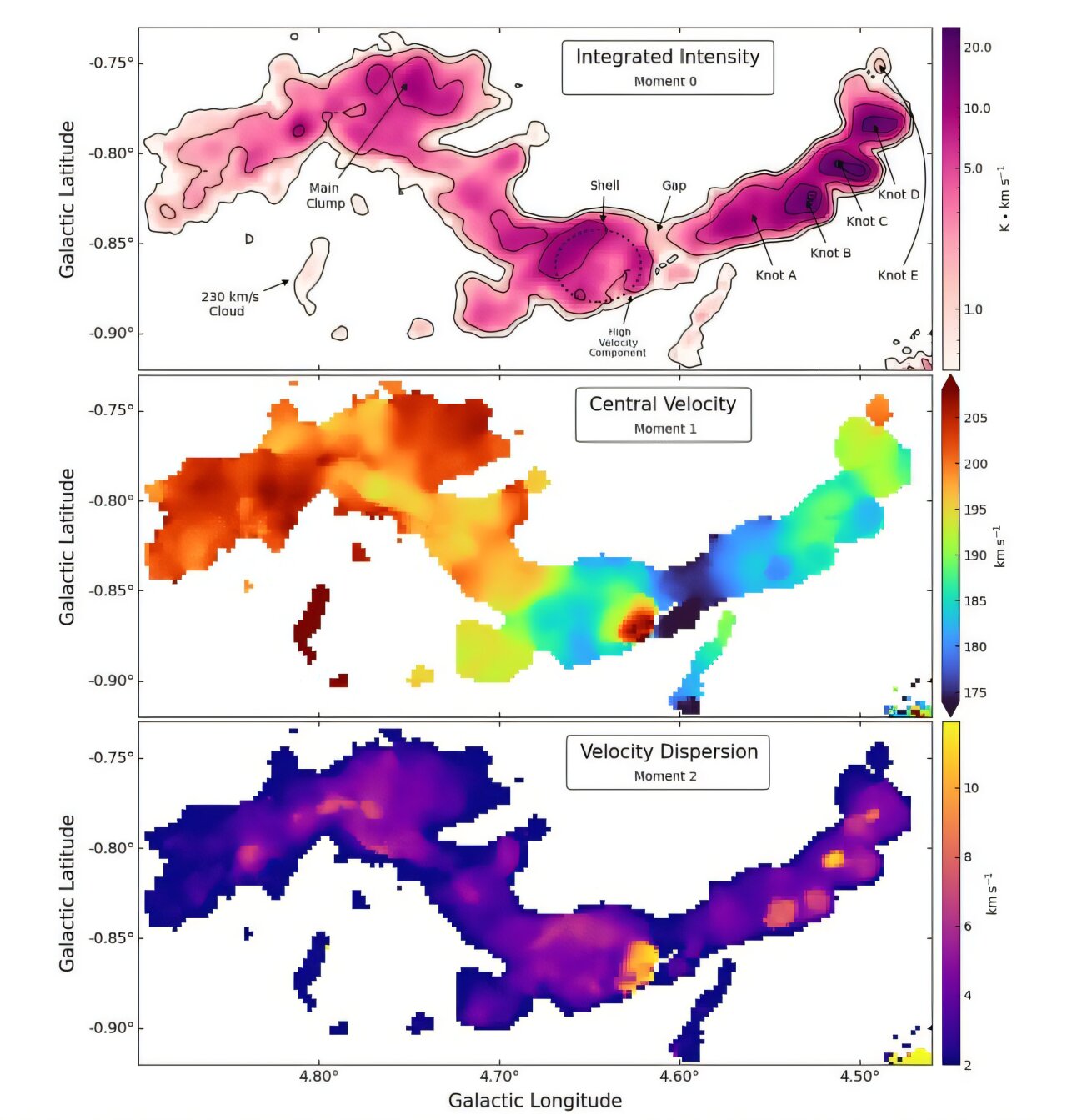Follow us on Google News (click on ☆)
Using the Green Bank radio telescope, a team of astronomers identified this cloud named M4.7-0.8. It lies in the middle of a dusty lane of the galactic bar, a key region for transporting material toward the center of our galaxy. The observations were published on arXiv.

Giant molecular clouds like M4.7-0.8 are stellar nurseries. Studying them helps us understand how galaxies form and evolve. This cloud spans nearly 200 light-years and has a very cold dust temperature, around 20 K.
Two main structures have been identified in M4.7-0.8: the 'Nexus' and the 'Filament'. The Nexus corresponds to the brightest carbon monoxide emission region, while the Filament shows an elongated morphology. These features suggest dynamic processes.
Researchers have also spotted two potential star-forming regions, named Knot B and Knot E. The Knot E region in particular displays a cometary structure that intrigues scientists. It could be an evaporating gas globule, but further studies are needed.
A shell-like structure was also observed in M4.7-0.8. It features a bright ammonia emission edge and a central cavity. This discovery opens new perspectives on star formation mechanisms.

Integrated intensity, central velocity and velocity dispersion for the NH3 (3,3) transition in the M4.7-0.8 cloud.
Credit: arXiv (2025). DOI: 10.48550/arxiv.2503.14174
This study highlights the importance of giant molecular clouds in galactic evolution. M4.7-0.8, with its unique characteristics, provides a rare opportunity to study these processes in detail. Future observations could reveal more information about star formation.
What is a giant molecular cloud?
Giant molecular clouds (GMCs) are the largest structures of gas and dust in galaxies. They are primarily composed of molecular hydrogen and can reach masses greater than 100,000 times that of the Sun.
These clouds are the preferred sites for star formation. Their density and low temperature allow atoms to aggregate and form molecules, then stars.
GMCs play a key role in galaxy evolution. By studying their distribution and properties, astronomers can better understand how stars and galaxies form and evolve.
How do astronomers study these clouds?
Astronomers use radio telescopes to observe molecular clouds. These instruments detect radio waves emitted by gas molecules, such as carbon monoxide or ammonia.
By analyzing these emissions, scientists can determine the size, mass and temperature of the clouds. They can also map their structure and identify star-forming regions.
Multi-wavelength observations are essential for studying these clouds. They allow combining data from different instruments to obtain a more complete picture of these structures.